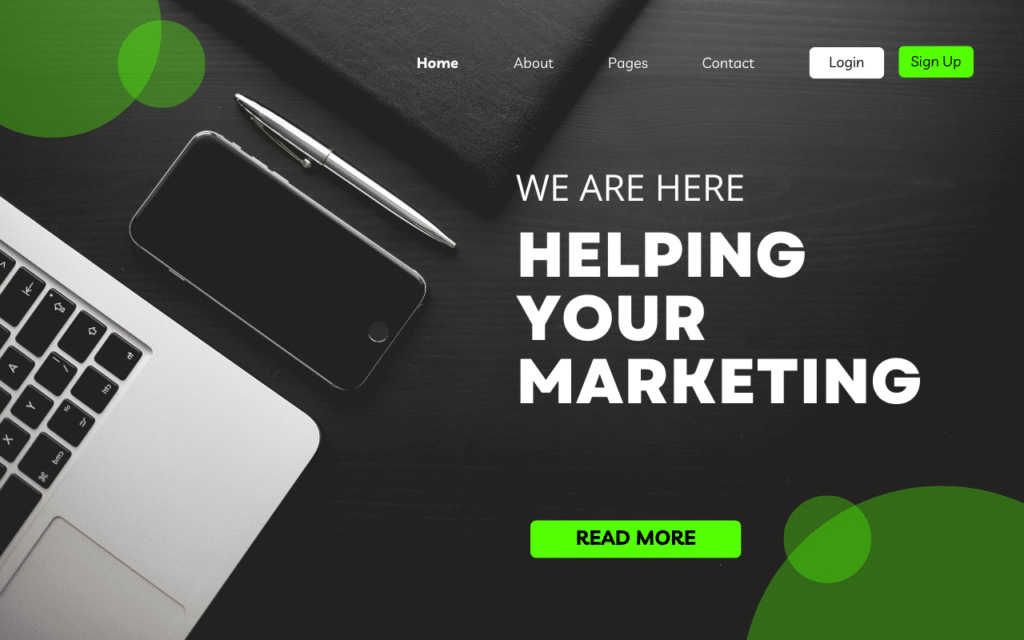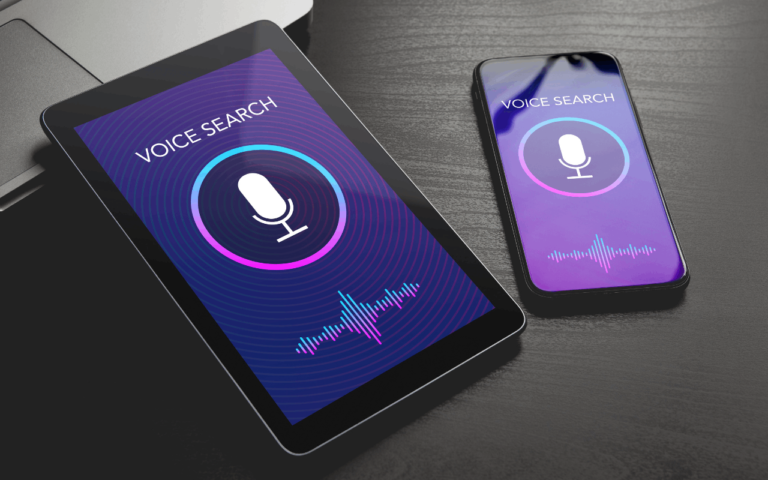9 Tips For Creating The Perfect Landing Pages
Welcome and thank you for choosing this guide that helps you create the ideal landing page.
Do you want to create landing pages that convert? If so, you’ve come to the right place! In this guide, we’ll teach you everything you need to know about creating a landing page that will motivate people to take the desired action. But before we get started, let’s take a moment to talk about the importance of landing pages.
Landing pages are the page that people land on after clicking on an ad, email, or social media post. They are your chance to make a first impression and convince someone to take action.
A well-designed landing page can increase your conversion rate by up to 200%. That means that for every 100 people visiting your landing page, you could get 20 new customers. If you want to increase your conversion rates, you need to create a landing page that is effective. And that’s where this guide comes in.
We will teach you how to create landing pages that are:
- Attention-grabbing
- Compelling
- Convincing
By the end of this guide, you will be able to create landing pages that convert like crazy. So what are you waiting for? Let’s get started.
Table of Contents
What Are Landing Pages And Why Is It Important?
A landing page is a web page that is specifically designed to convert visitors into customers or leads. It is typically the first page that someone sees after clicking on an ad, so it is important to make a good first impression.
Landing pages are important because they can help you increase your conversion rate. A well-designed landing page can help you increase your conversion rate by up to 50%. That’s a lot of potential customers that you could be missing out on if you don’t have a good landing page.
There are many different types of landing pages, but they all have one thing in common: they are all designed to convert visitors into customers or leads. Some common types of landing pages include:
- Lead generation landing pages: These landing pages are designed to collect visitor information, such as their name, email address, and phone number. This information can then be used to follow up with visitors and nurture them into customers.
- Sales landing pages: These landing pages are designed to sell a product or service. They typically include a strong call to action, such as “Buy Now” or “Sign Up.”
- Free offer landing pages: These landing pages offer visitors a free product or service in exchange for their contact information. This is a great way to generate leads and build your email list.
No matter what type of landing page you choose, it is important to make sure that it is well-designed and optimized for conversion. Here are a few tips for creating a landing page that converts.
Tips for creating the perfect landing pages
1. Understanding Your Target Audience
- Conducting market research to identify your target audience: The first step is to identify who your target audience is. This can be done by conducting market research involving surveys, interviews, and focus groups.
- Analyzing their needs, preferences, and pain points: Once you know who your target audience is, you need to start to understand their needs, preferences, and pain points. This will help you craft landing pages that speak to their needs and interests.
For example, if your target audience is busy professionals, you might want to focus on the benefits of your product or service that can help them save time or be more productive.
- Crafting a landing page that resonates with your target audience: Once you understand your target audience’s needs, preferences, and pain points, you can start to craft a landing page that resonates with them. This includes speaking in their language, addressing their concerns, and emphasizing the benefits of your product or service that are most relevant to them.
For example, if your target audience includes parents of young children, you could want to speak to them in their language and discuss how your product or service might help them save time or be more organized.
2. Defining Clear Goals
- Set clear goals for your landing pages: The first step is to decide what you want to achieve with your landing page. Do you want to generate leads, increase email sign-ups, or sell products? Once you know what you want to achieve, you can start to set specific goals.
For example, if you want to generate leads, you might set a goal of getting 100 new leads from your landing page in the next month.
- Align your goals with your blog’s overall objectives: Your landing page should be aligned with the overall objectives of your blog. For example, if your blog is about marketing, your landing page might be designed to generate leads for your marketing services.
- Utilize specific and measurable metrics to track success: Once you have set your goals, you need to develop a plan for tracking your success. This will help you to see if your landing page is meeting your goals and make necessary adjustments. Some common metrics for tracking landing page success include:
- Conversion rate: The percentage of visitors who take the desired action, such as signing up for your email list or making a purchase.
- Bounce rate: The percentage of visitors who leave your landing page after viewing only one page.
- Average time on page: The average amount of time that visitors spend on your landing page.
3. Designing an Eye-Catching Layout

- Create a visually appealing and professional design: Your landing page should be visually appealing and professional. This means using high-quality images, fonts, and colors. It also means using a layout that is easy to read and understand.
- Utilize white space effectively: White space is the space between elements on your landing page. It can be used to create a sense of balance and order. It can also be used to draw attention to important elements.
- Use colors effectively: Colors can be used to create a mood or atmosphere on your landing page. They can also be used to highlight important information. When using colors, it is important to choose colors that are complementary and that will appeal to your target audience.
- Use fonts effectively: Fonts can be used to create a sense of hierarchy on your landing page. They can also be used to add personality and style. When choosing fonts, it is important to choose fonts that are easy to read and that will appeal to your target audience.
- Use imagery effectively: Images can be used to break up text and make your landing page more visually appealing. They can also be used to tell a story or to illustrate a point. When using images, it is important to choose images that are high-quality and that are relevant to your offer.
- Ensure a responsive design for seamless user experience across devices: Your landing page should be responsive, meaning it should look good and be easy to use on all devices, including desktops, laptops, tablets, and smartphones.
4. Crafting Compelling Headlines and Subheadings
- Write attention-grabbing headlines that convey your value proposition: Your headline is the first thing that people will see, so it’s important to make it count. Make sure your headline is clear, concise, and attention-grabbing. It should also convey your value proposition, which is what you offer to your target audience.
- Use subheadings to break up content and guide readers: Subheadings can be used to break up your content and make it easier to read. They can also be used to guide readers through your landing page and help them find the information they are looking for.
- Incorporating relevant keywords for search engine optimization (SEO): When crafting your headlines and subheadings, it’s important to incorporate relevant keywords for search engine optimization (SEO). This will help your landing page rank higher in search results, which will lead to more visitors.
5. Writing Engaging and Relevant Content
- Understand the importance of persuasive copywriting: Persuasive copywriting is the art of writing in a way that convinces people to take action. When writing your landing page content, it’s important to use persuasive copywriting techniques to convince visitors to sign up for your email list, download your free ebook, or make a purchase.
- Highlight the benefits and unique selling points of your blog or offer: When writing your landing page content, it’s important to highlight the benefits and unique selling points of your blog or offer. This will help to convince visitors that your offer is worth their time and money.
- Use clear and concise language to convey your message effectively: When writing your landing page content, it’s important to use clear and concise language. This will help to ensure that your message is easy to understand and that visitors can quickly grasp the benefits of your offer.
6. Implementing Strong Call-to-Action (CTA) Buttons
- Place strategic and visually appealing CTA buttons throughout the landing page: CTA buttons should be placed in strategic locations throughout your landing page. This will help to ensure that visitors see them and are reminded of your offer.
- Use action-oriented language to encourage conversions: CTA buttons should use action-oriented language, such as “Sign Up Now,” “Download Free,” or “Buy Now.” This will help to encourage visitors to take action.
- Test different CTAs to optimize performance: Once you have implemented your CTA buttons, it’s important to test different variations to see what works best. Try different colors, fonts, and placements to see what gets the best results.
7. Incorporating Social Proof and Testimonials
- Showcase positive customer reviews and testimonials: Positive customer reviews and testimonials can be a powerful way to build trust and credibility with potential customers. When visitors see that other people have had a positive experience with your product or service, they are more likely to trust you and do business with you.
- Display social proof, such as user ratings or endorsements: Social proof, such as user ratings or endorsements, can also be a powerful way to build trust and credibility. When visitors see that your product or service has been rated highly by other people, they are more likely to trust you and do business with you.
- Make sure your social proof is relevant: When incorporating social proof and testimonials on your landing page, it’s important to make sure that they are relevant to your target audience. For example, if you are selling a product for women, you would want to showcase testimonials from women who have used your product and loved it.
8. Optimizing for Search Engines
- Conducting keyword research: The first step to optimizing your landing page for search engines is to conduct keyword research. This will help you identify the keywords that people are using to search for the products or services that you offer.
- Incorporating relevant keywords: Once you have identified your target keywords, you need to incorporate them into your landing page. This includes including them in your meta tags, headings, and body text.
- Ensuring fast loading times: Search engines also take into account the loading speed of your landing page. If your landing page takes too long to load, it will be less likely to rank well in search results.
- Making your landing page mobile-friendly: More and more people are using their mobile devices to search the web. Make sure your landing page is mobile-friendly so that it can be easily viewed and used on mobile devices.
9. A/B Testing and Continuous Optimization
- The importance of A/B testing to optimize your landing page’s performance: A/B testing is a method of comparing two versions of a landing page to see which one performs better. This can be done by showing different versions of the landing page to different visitors and measuring the results.
- Testing different elements, such as headlines, CTA buttons, and layouts: When A/B testing your landing page, it’s important to test different elements to see which ones have the biggest impact on conversion rates. Some common elements to test include headlines, CTA buttons, and layouts.
- Analyzing data and making data-driven decisions to improve conversion rates: Once you have collected data from your A/B tests, you need to analyze it to see which version of the landing page performed better. You can then use this information to make data-driven decisions about how to improve your landing page’s conversion rates.
Conclusion
Landing pages are an essential part of any marketing strategy. They can help you generate leads, increase sales, and build brand awareness. By following the tips in this blog, you can create a landing page that is effective and help you achieve your marketing goals.
But landing pages can also be more than just a way to generate leads and sales. They can also be a way to inspire and engage your audience. When you create a landing page that is both informative and engaging, you can create a lasting impression on your visitors.
But here are a few things to keep in mind when creating your landing page:
Make it fun! People are more likely to take action if they’re having fun. So, don’t be afraid to add a little humor or personality to your landing page.
Be creative! There are no rules when it comes to landing pages. So, don’t be afraid to get creative and experiment with different designs and layouts.
Be yourself! Your landing page should reflect your brand and your personality. So, don’t try to be someone you’re not.
If you follow these tips, you’ll be well on your way to creating a landing page that’s both effective and fun. So, what are you waiting for? Start creating your landing page today!
“If you’re still struggling to create perfect landing pages, don’t hesitate to contact Nargish Digital. We’ll help you create landing pages that convert and boost your business.” – Click Here Now!


